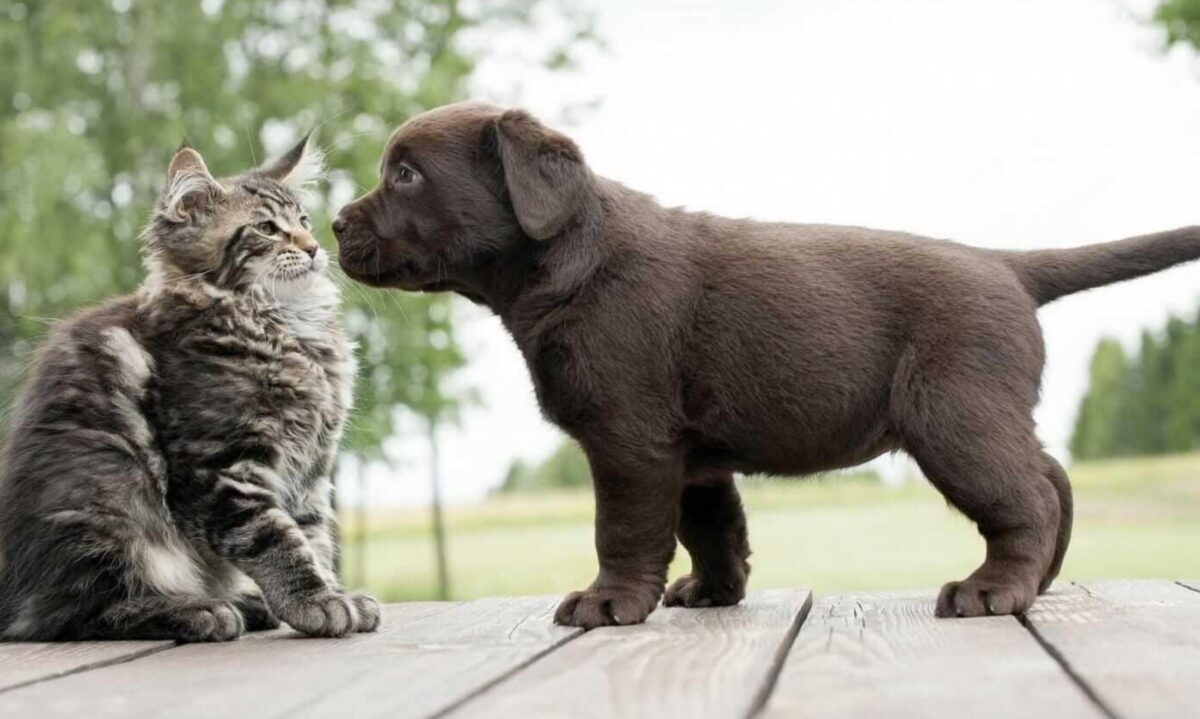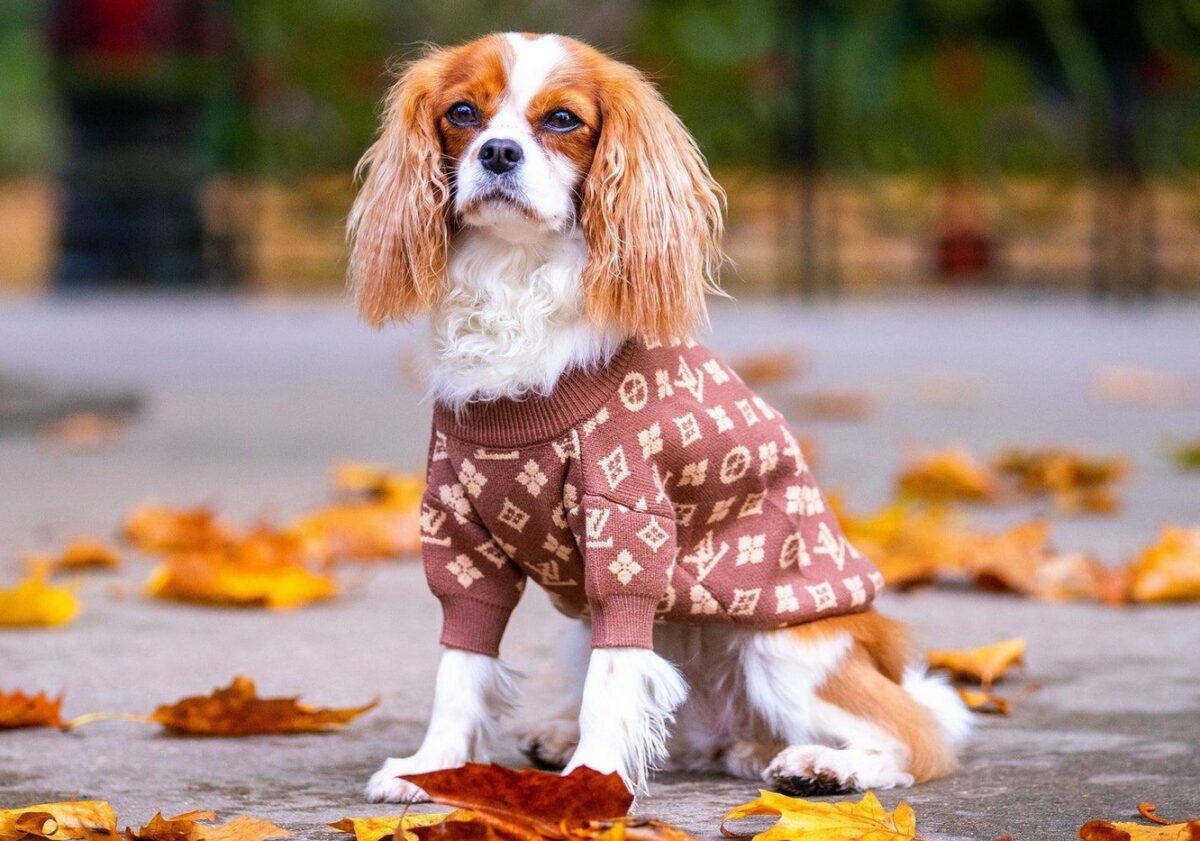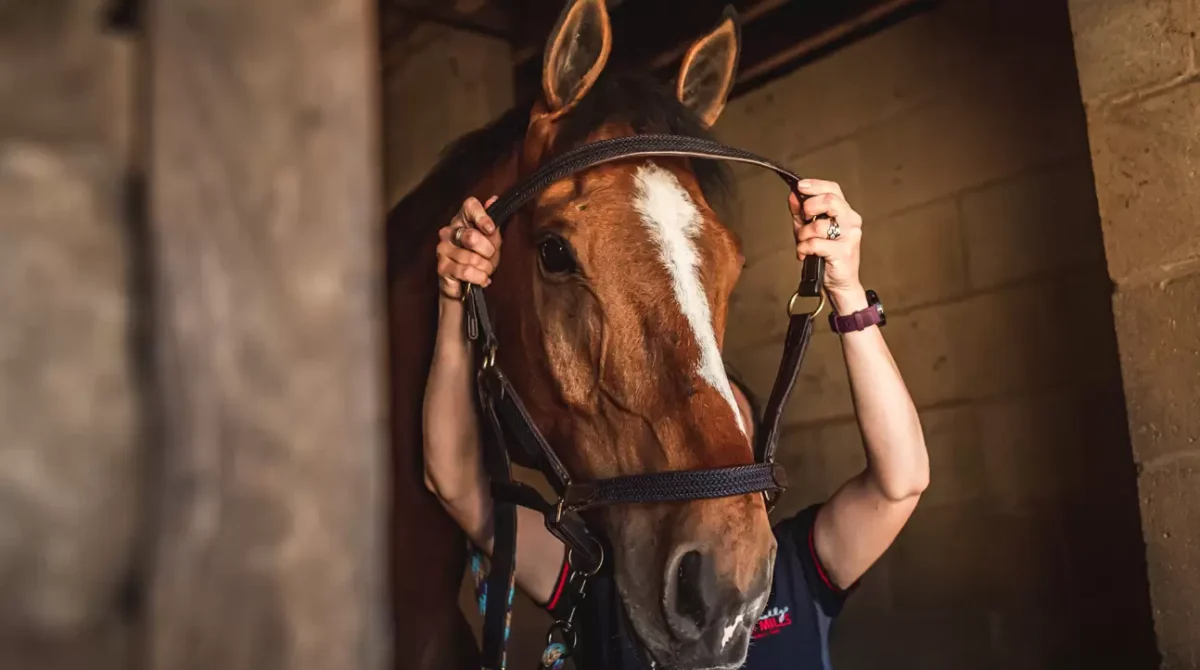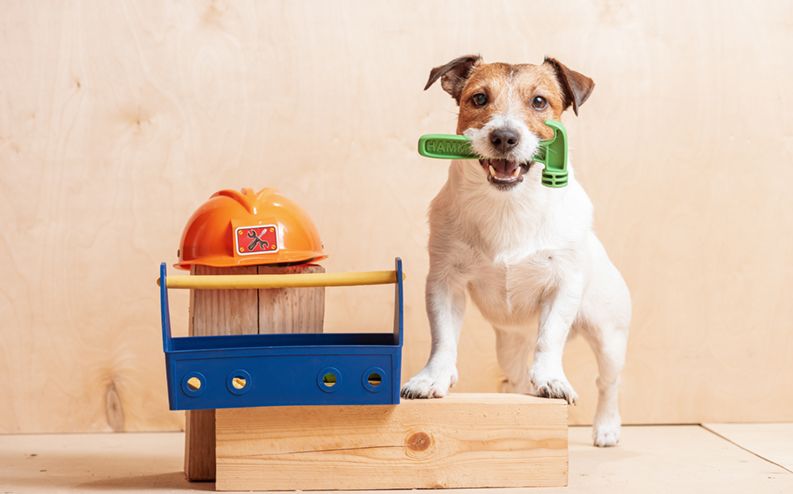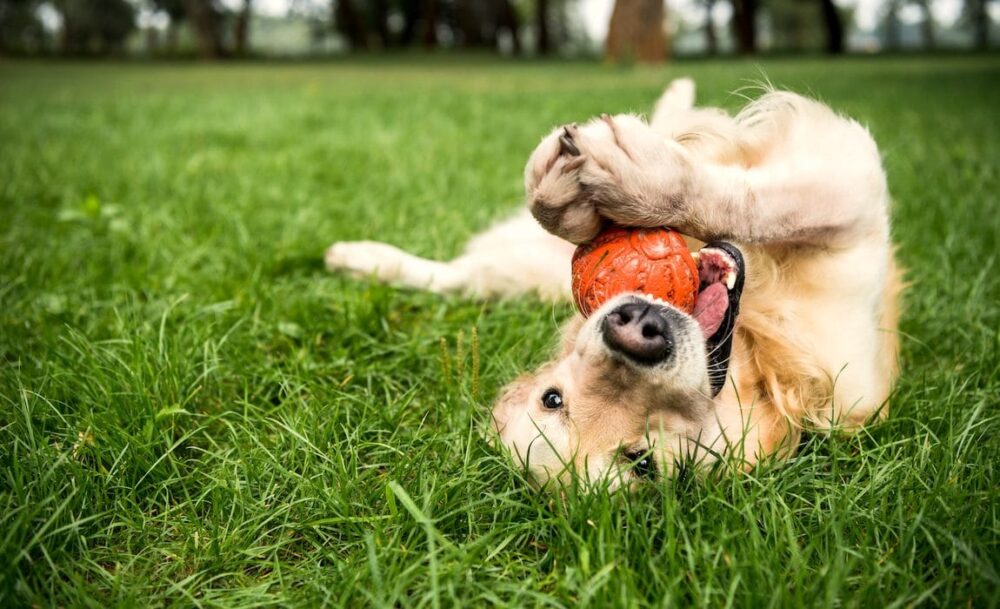Raising a cat and a dog in the same household can be hard, but it is possible. But one major thing to consider when raising a cat and dog at the same time is how to go about meal times.
When raising these two pets, you need to make sure they eat the right food. In simpler terms, feed cat food to cats and feed dog food to dogs.
These products are specifically designed for these animals to meet all their nutritional needs.
Remember, dogs and cats are two completely different animals.
Aside from temperament, their bodies couldn’t be more diverse. So, that means they each have their own set of nutritional needs that need to be met by their food.
And in this article, we’re taking a look at five key differences in the nutritional needs of cats vs. dogs.
Cats Need More Meat
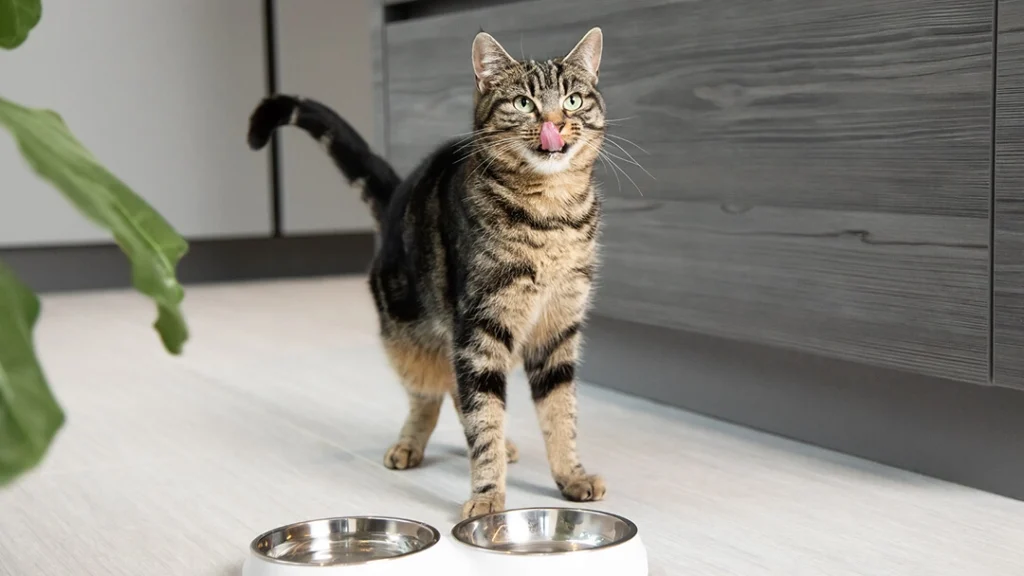
To start, cats are obligate carnivores. This is a term used to describe animals whose diets consist of 70% meat. This means muscle meat and organ meat. This is why you can find that most cat food products are derived from meat to ensure the cat gets all the nutrition it needs.
On the flip side, dogs are somewhere in the middle of carnivores and omnivores. While meat is an essential part of their diet, dogs also need other nutrients from fruits and vegetables as well. So, you will find that dog food has a wider variety of ingredients compared to cat food.
This also means that your dog won’t be getting all the nutrients it needs with cat food. On the flip side, your cat will not be able to get its meat requirements from eating dog food.
In fact, if you notice that your cat’s food doesn’t contain any meat products, it’s best to do the research to ensure your feline will be getting all the protein it needs.
Fatty Acids
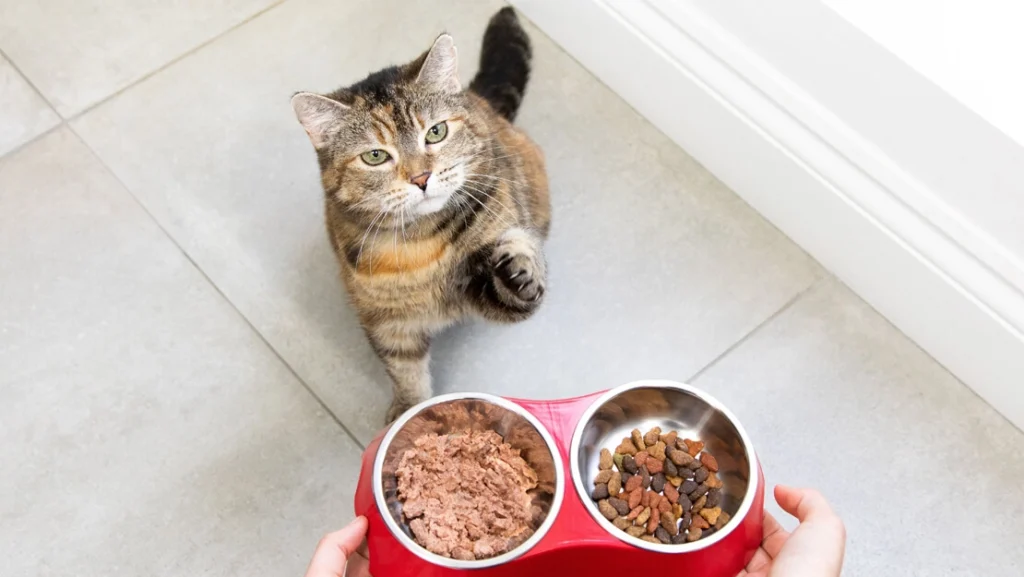
One of the main differences in cat and dog nutrition is their fatty acid requirements. While all animals need fatty acids to survive, there are key differences in dog and cat bodies that require different types of food.
The body can synthesize a range of fatty acids, and this also goes for dogs and cats. And if there are essential fatty acids that your body can synthesize on its own, the body needs to derive them from food.
With that said, cats and dogs create different fatty acids. A prime example of this is arachidonic acid. Dogs can naturally produce this in their body while cats don’t. So, you will find that cat food has arachidonic acid while dog food won’t’.
Amino Acids
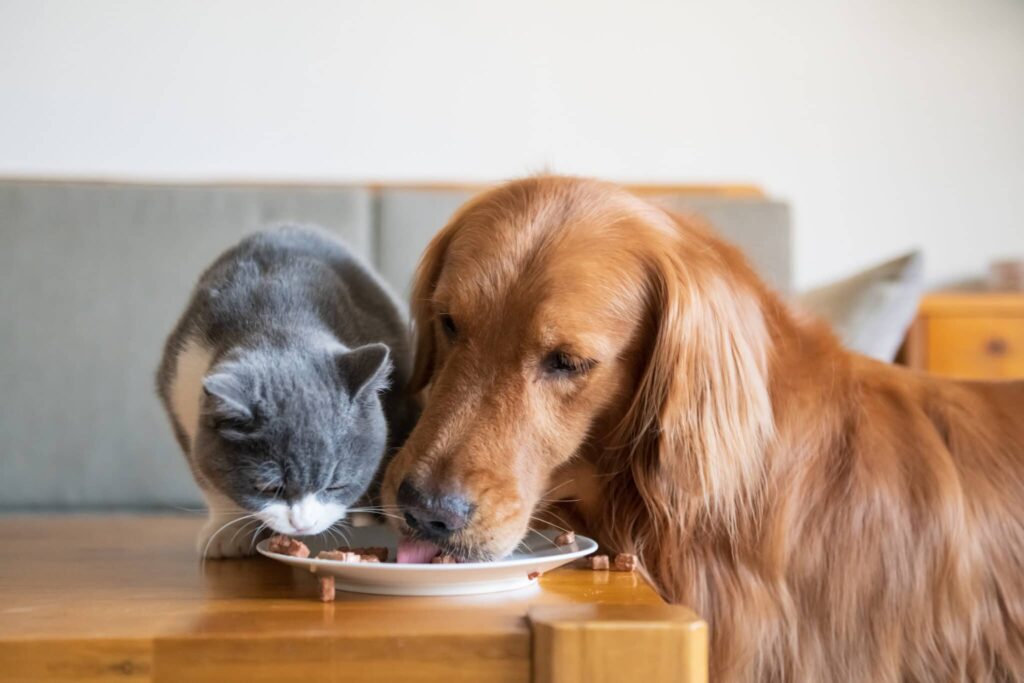
Cats need more protein than dogs in their regular diet. As obligate carnivores, cats require much more amino acids than dogs. Additionally, cats need a significant amount of taurine to keep their body functioning properly.
While dogs can synthesize taurine, cats can’t. So, you need to find a cat food that has a fairly high amount of taurine to ensure that your cat is getting what it needs.
If the food doesn’t have enough taurine, your cat could develop a heart condition, experience reproductive failure, and experience hindered development as a kitten. This is a prime example of dogs and cats having very different bodies with a varied set of nutritional needs.
Vitamins
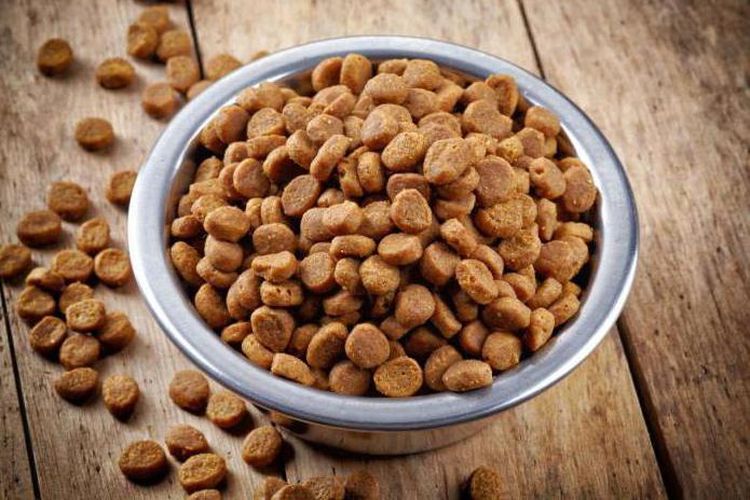
One of the characteristics of a dog’s body is its ability to convert compounds in pre-vitamin forms to vitamins that are essential to its body. This includes vitamin A and niacin. These vitamins are crucial in the animal’s eye health, skin health, and even supporting metabolic processes.
Cats, on the other hand, cannot synthesize adequate amounts of vitamin A and niacin. So, to give their body everything it needs, it’s best to find cat food products that contain a certain level of these vitamins to ensure your cat is in the best health possible.
Cats and Dogs Require Special Food
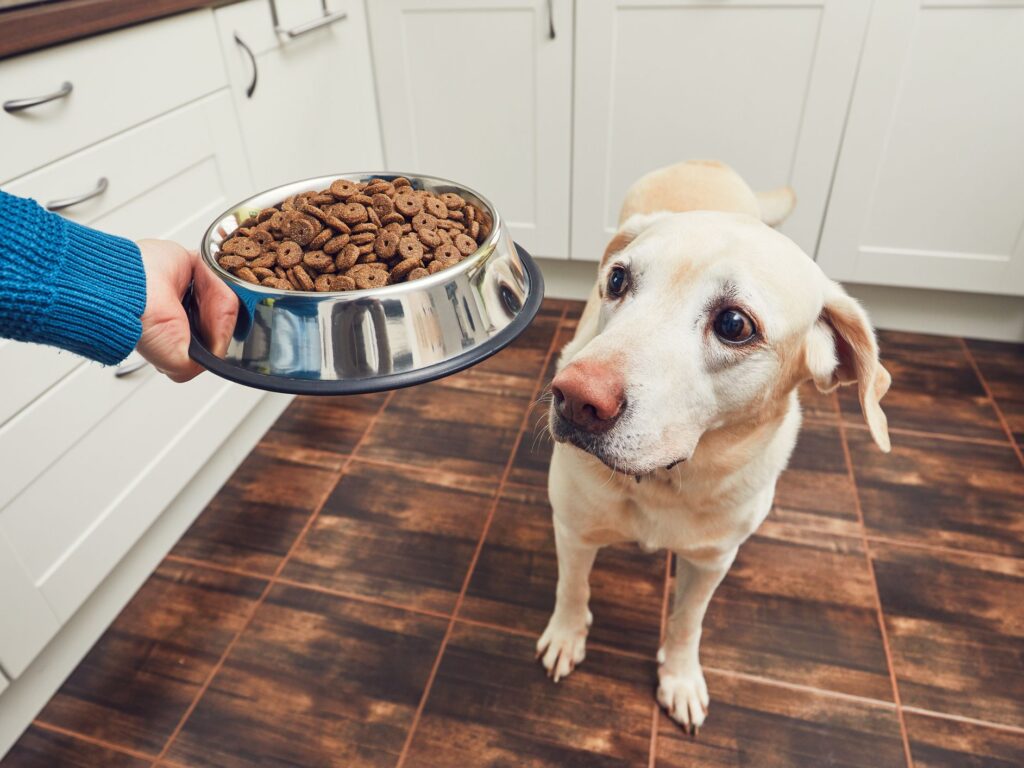
Both cats and dogs have distinct nutritional profiles for different stages of their life. So, what a kitten may need to survive is different from what an adult cat may need, which will in turn be miles away from what puppies need to survive. You can find these nutritional profiles on the Association of American Feed Control Officials website. That way, you can figure out exactly what your cat and dog need to live a healthy life.
Can My Cat and Dog Switch Food?
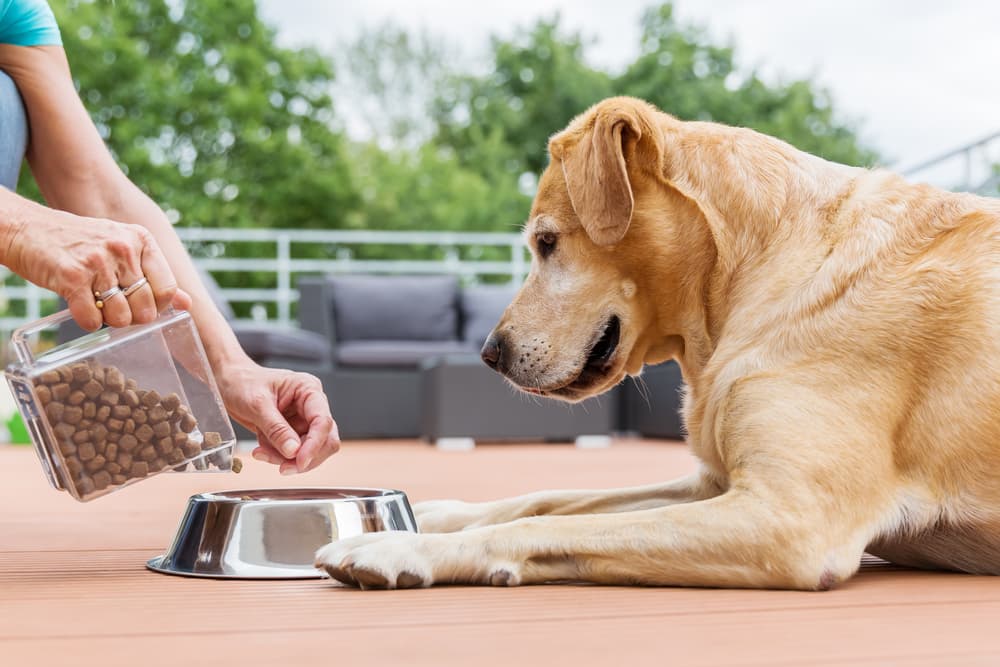
So, can dogs eat cat food? If you’re raising a cat and dog at the same time, you may have to deal with them switching bowls from time to time.
The reason for this is that since cats have fewer tastebuds than dogs, they require stronger tastes in their food.
This is something that instantly grabs your dog’s attention since dog food is relatively bland compared to cat food. And while this is something that will happen when raising dogs and cats in the same household, it’s not something you want them to make a habit of.
Dogs and cats won’t get the appropriate nutrients for their body when they switch food. This can cause a lot of problems when done regularly. So, while there’s no cause to panic if you catch your dog and cat switching bowls once or twice if they do it regularly, you need to find ways to prevent that from happening.
You can find out more about that in this article right here.
What To Do If You Catch Your Dog Eating Cat Food
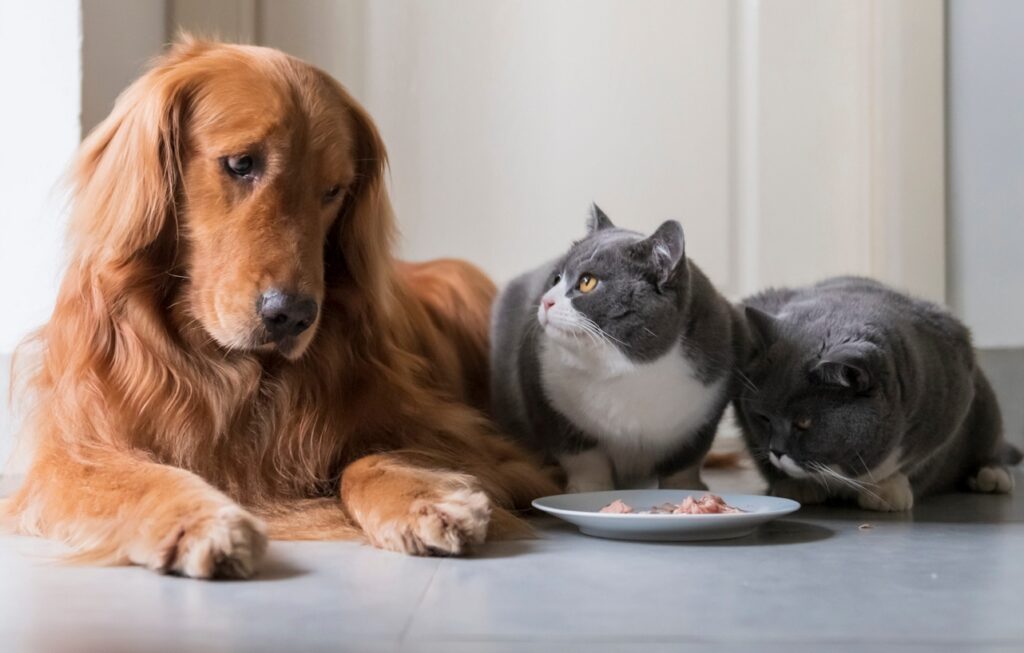
If you catch your dog eating cat food and vice versa, try to stop them immediately. From there, you can teach them not to eat the food of the other animal. You can also find different eating set-ups where the cat and dog food aren’t in the same place.
Conclusion
Cats and dogs have very different nutritional needs. This is why there are specific food products for cats and dogs on the market. So, if you have pets at home, you need to make sure to find and feed them the right food so that they get all the nutrients they need to live a healthy life.
And now that you know five of the key differences between a cat’s and a dog’s needs, it will be much easier to provide your pet with the best life possible.

